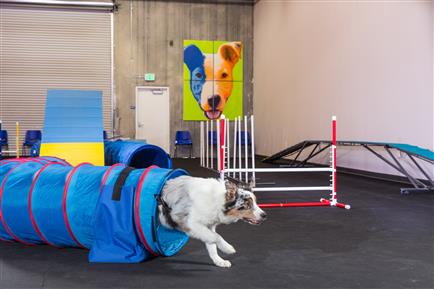1. Practice Your Training
Frigid winter days are a great time to practice training with your pup. Getting your dog thinking can be just as tiring as a romp at the park. If your dog has mastered the basics, such as sit, down, stay, etc., you can chain them together so that your dog has to do more for his reward. Don’t get too crazy at first – start with two or three commands and build up. For example, try a puppy push-up – ask your dog to sit, lay down, and sit again for a treat. You can also try training your pup a few tricks!

2. Stuff a Kong
This is a good one for when your dog goes into his crate, or when you are leaving the house, and is probably the easiest one to do. Get a Kong, put some treats or kibble in it, seal it with peanut butter, and put it in the freezer until you need it. If you only have one dog, you can give it to her before you leave in the morning, and she can eat through the peanut butter to her breakfast! This is not a good idea if you have two dogs, no matter how well they share and get along when you are there. All bets are off with a high value treat like a peanut butter Kong!
3. Get or make some puzzle toys
Ranging from somewhat easy to difficult, you can find puzzle toys in just about any pet store. You can also make some really fun (and easy) toys if you are the DIY-type. Use your old t-shirts tomake a toy for your pup.
Perfect for strong chewers or tug-of-war fans.
Really easy treat dispenser you can make from a tennis ball.
This puzzle toy is great for rainy days or high energy dogs.
All you need is a water bottle, treats, and a sock.
4. Play “Find it”
Hide your dog’s favorite toys or bone around the house and tell them to “find it.” You might have to help them out at first and lead them to the toy/bone.
5. Play “Hide-n-Seek”
You can also play “hide-n-seek” with people – have one person hide and then have your dog find the person. This is also great practice for the command “come”. After the person hides, they tell the dog to “come” and then the dog gets to go find them! This is especially fun if you have a bigger house with lots of rooms or multiple levels.

6. Go to an indoor agility class
Check out places near you that offer dog training and see if they have an indoor agility class or open gym. Zoom Room is a franchise that has a few locations around the United States, but if one isn’t near you, look around for local trainers with facilities.



